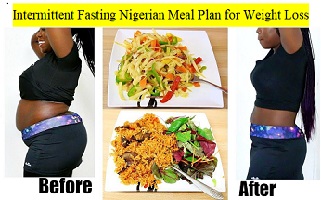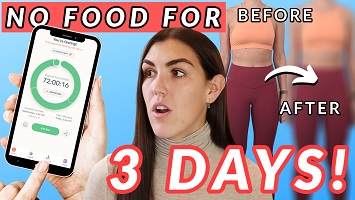Intermittent Fasting Schedules: Which One Is Best?
Intermittent Fasting Schedules for beginners: Which One Is Best? Please watch >>>
- What Are the Best Hours for Intermittent Fasting? The Easiest One For You To Follow
- The 7 Types of Intermittent Fasting, and What to Know About Them
- Popular Intermittent Fasting Methods ~ which method is best in intermittent fasting?
- How to Choose an Intermittent Fasting Schedule
- Figuring out your periodic fasting schedule
- Intermittent Fasting Reviews
Table of Contents
Intermittent Fasting Schedules: Which One Is Best?

Whether it’s 16:8, 20:4, 5:2, alternate day fasting, or something else, figuring out the best intermittent fasting schedule for you (or a client) is dependent on a number of factors. Here, we’ll go over all of your scheduling options and give you specific advice for each.
Many people regard intermittent fasting as the new weight-loss, disease-prevention, and anti-aging mantra.
Though this method has produced positive health benefits for many people, it is best to consult with your doctor before making any drastic changes to your diet.
Intermittent fasting is a diet method in which you adhere to a specific eating window during the day and refrain from eating during other hours. The body will need to adjust to this method.
Methods of Intermittent Fasting ~ intermittent fasting Schedules
Intermittent fasting can be done in a variety of ways. The number of fast days and calorie allowances differ between methods.
Intermittent fasting entails completely or partially abstaining from food for a set period of time before eating normally again.
According to some studies, this way of eating may provide benefits such as weight loss, improved health, and increased longevity.
Intermittent fasting advocates claim that it is easier to stick to than traditional calorie-controlled diets.
However, each person’s intermittent fasting experience is unique, and different styles will suit different people.
This article discusses the research behind the most popular types of intermittent fasting and offers advice on how to stick to this diet.
The fundamental concepts of Intermittent Fasting Schedules
- Is there a “best way” to fast that is universally effective? Most likely not. (But that’s fine.)
- Tailor the plan to the individual. People are unique. So it all comes down to finding the best path for each individual.
- There are numerous IF schedules. Feel free to try them all or choose one that appears to be a good fit for your body, goals, and lifestyle.
- Consider the big picture. It’s easy to get bogged down in the details of specific schedules.
Instead, concentrate on the underlying ideas and practices that allow a fasting schedule to function.
The Benefits of Intermittent Fasting
Fat loss is fantastic, but it isn’t the only advantage of fasting.
- Intermittent fasting simplifies your day.
- Intermittent fasting helps you live longer.
- Intermittent fasting may reduce the risk of cancer.
- Intermittent fasting is much easier than dieting.
Different Intermittent Fasting Schedules with Examples
If you want to try fasting, you have a few options for incorporating it into your daily routine.
Intermittent fasting works at least for some people. But which fasting schedule is best?
In addition to reviewing the top IF schedules, we’ll assist you in determining which one will work best for you or a client.
We’ve included advice for each of the 7 popular types of intermittent fasting:
- Skip-a-meal fasting, which is precisely what it sounds like
- Fasting for 12-24 hours an experiment
- 16:8 fasting, or confining your eating to 8 hours of the day, and fasting for the other 16
- 20:4 fasting, or eating all of your food during a 4-hour window
- Fasting 1-2 full days a week, or not eating for 24 hours once or twice each week
- Alternate day fasting (ADF), or eating every other day
- 5:2 fasting, which is eating normally five days a week and restricting calories two days a week
- Fasting mimicking diets (FMD), or consuming half as much as usual for a few days to a week, then eating normally for 3-4 weeks
The most effective intermittent fasting schedules ~ best intermittent fasting methods
You must first understand your options before deciding on the best fasting schedule for you.
We’ve outlined the most important ones here, beginning with the most basic and progressing to the most advanced.
3 Criteria for Choosing an Intermittent Fasting Schedule ~
Choosing the best fasting protocol for you entails doing what is best for you. Consider the following three criteria:
#1: Ease
Intermittent fasting should not be difficult. During your fasts, you should feel relatively at ease.
This isn’t to say you won’t get hungry. Hunger is an unavoidable condition.
However, if the discomfort extends beyond hunger, you should pause and reconsider. Here are some indicators that your fasting protocol may need to be tweaked:
- You’re not sleeping well
- You’re in a bad mood during fasting periods
- Exercise performance is declining
- You feel weak, tired, or stressed
- You resent family and friends for eating in front of you
Consider cutting your fast short if you notice one or more of these symptoms. Your comfort and health are priceless.
#2: Schedule
Your fasting method is also determined by your schedule.
Alternate-day fasting may not be appropriate if your family has a sacred dinner ritual. Time spent with family may take precedence.
Fasting, on the other hand, generally frees up your schedule. When you don’t have to worry about meal preparation or eating, you have more time to do other things.
Many people, for example, skip breakfast as a productivity hack. When mealtime arrives, food becomes a reward for a job well done.
#3: Health goals
Do you want to lose weight by fasting? To stay fit and healthy? Or to reap additional health benefits?
Before embarking on a fasting regimen, be certain of your motivation.
Longer regimens are probably more effective for losing weight. The fewer calories you consume, the smaller your feeding window.
But keep in mind the first criterion: Ease.
If you’re constantly uncomfortable while fasting, you’re unlikely to stick to the plan.
It is also important to note that longer fasts are not ideal for muscle maintenance or growth. The possibility of calorie and protein restriction is far too great.
Multiple studies, however, have found that people can maintain muscle while resistance training on a 16/8 diet.
If your goals are strength gains and muscle maintenance, sixteen hours may be a good upper limit.
Getting Your Fasting Protocol in Order ~ Calibrating Your Fasting Protocol
Easing into your fasting protocol is a smart way to calibrate it. Begin with a 12-hour fast and work your way up until you find a program that works best for your body.
Here’s how that might look in terms of scheduling on a weekly basis:
- 1 week of 12-hour fasting
- 3 days of 13-hour fasting
- 3 days of 14-hour fasting
- Three days of 16-hour fasting
- 3 days of 18-hour fasting
Once you’ve determined which IF protocol works best for you, you can keep it up, listen to your body, and adjust as needed.
If you experience any level of discomfort, return to a more sustainable routine. Remember that the goal isn’t to fast for as long as possible or to lose weight as quickly as possible.
Fasting Protocol
The goal is to find a sustainable intermittent fasting schedule that works for your lifestyle and personal health needs.
To keep things simple, you can use a diet tracker app like Carb Manager to aid in the implementation and maintenance of your customized intermittent fasting program.
This way, you can keep track of all your important health metrics in one place. Once you’ve established your routine, you can sit back and enjoy the fruits of your labor
Are there any dangers?
Some people, such as pregnant women, children, people at risk of hypoglycemia, and people with certain chronic diseases, should avoid intermittent fasting.
What are the three side effects of intermittent fasting?
Fasting’s Downfalls
- May Encourage Overeating. Because of how intermittent fasting is structured, many people overeat on “feasting” days, which are days when you are allowed to eat
- May Reduce Physical Activity
- Might Make You Tired and Moody
- May Lead To an Eating Disorder
Because of how intermittent fasting is structured, many people overeat on “feasting” days, which are days when you are allowed to eat
The bottom line on Intermittent Fasting Schedules
There is no “ideal” fasting and feasting schedule for the 16/8 method of intermittent fasting.
Consider the body’s natural hunger rhythm as well as other factors when deciding on the best intermittent fasting schedule for your life.
Putting in the effort to figure out your daily feasting/fasting schedule will boost your confidence and chances of sticking with your new program. Plan your work, and then execute it.
All intermittent fasting schedules may result in weight loss if followed consistently, and the 14:10 method may be the most convenient way to follow an IF diet.
Questions to Ask, Concerns, and Complaints About Intermittent Fasting Schedules
Which type of intermittent fasting is the most effective for weight loss? Intermittent fasting best for weight loss
One of the most popular types of fasting for weight loss is the 16/8 intermittent fasting plan.
The plan restricts food and calorie-containing beverages to an 8-hour window per day. It necessitates fasting for the remaining 16 hours of the day.
What are the various types of intermittent fasting?
Intermittent fasting types
- · Timed eating (the 16/8 or 14/10 method) you can set fasting and eating times in this option.
- · The twice-weekly method (5:2 method)
- · Fasting on alternate days
- · The 24-hour fast (or eat: stop: eat method)
7 Different Types of Intermittent Fasting
Continue reading to learn about seven different ways to practice intermittent fasting.
- · Fast for 12 hours a day. Different styles of intermittent fasting may suit different people.
- · Fasting for 16 hours
- · Fasting for 2 days a week
- · Alternate day fasting.
- · A weekly 24-hour fast
- · Meal skipping
- · The Warrior Diet
Which intermittent fasting method is best for newcomers?
Because they are less restrictive in terms of when you can eat, 14:10 and 12:12 are ideal for those new to intermittent fasting. 2)
5:2 Fasting – In this method, you can eat normally five days a week but consume 500-600 calories on two non-consecutive days.
What is the most successful method of intermittent fasting?
Meal skipping is most likely to be successful when people monitor and respond to their bodies hunger signals.
People who follow this method of intermittent fasting will eat when they are hungry and skip meals when they are not.
For some people, this may feel more natural than the other fasting methods. Which intermittent fasting schedule is best?
The best hours for intermittent fasting are the 16/8 or 14/10 fasting periods, depending on your lifestyle and when you can stop eating.
What is the healthiest fasting schedule?
Every day, a person must choose and follow a 12-hour fasting window.
Fasting for 10-16 hours, according to some researchers, can cause the body to convert fat stores into energy, releasing ketones into the bloodstream. This should promote weight loss.
What is the most effective intermittent fasting window for losing belly fat?
Researchers followed 19 adults with metabolic syndrome whose meals were spread over a 14-hour window in a 2019 study and discovered that limiting meals to a 10-hour window (followed by 14 hours of fasting) was associated with weight loss, smaller waist circumference, lower blood pressure, and LDL “bad” cholesterol.
Intermittent fasting 16/8
The practice of 16/8 intermittent fasting entails restricting your intake of foods and calorie-containing beverages to an 8-hour window each day.
You don’t eat anything for the next 16 hours, but you can drink water and other low-calorie beverages like plain coffee or tea.
Intermittent fasting schedule for women ~ how many hours should a woman do intermittent fasting?
Daily 14-16 hour fasts, the 5:2 diet, or modified alternate-day fasting are the best types for women.
While intermittent fasting has been shown to be beneficial for heart health, diabetes, and weight loss, some evidence suggests that it may be harmful to reproduction and blood sugar levels in some women.
How long does 16/8 intermittent fasting take to work?
After the first week of intermittent fasting, you should notice less bloating and a tighter, slimmer midsection.
Some people will lose weight by week two, but don’t be discouraged if your scale hasn’t moved.
Continue for the next 4-6 weeks, and you should see changes.
Best intermittent fasting app for weight loss 2023 ~ what is the number one intermittent fasting app?
Fasting Tracker is the most popular fasting app, with millions of users worldwide.
It’s a simple fasting tool that will help you live a self-determined life full of healthy habits.
You’ll lose weight quickly and feel more energetic! There is no diet and no yo-yo effect.
What to eat during intermittent fasting
Essentially, the best foods to eat while intermittent fasting are also the best foods to eat in general
Avocados, potatoes, cruciferous vegetables, fish, seafood, whole grains, nuts, and fermented foods are among them.
It’s also important to remember to include water in your daily routine.
Intermittent Fasting Schedules

You can choose a daily approach that limits daily eating to one six- to eight-hour period per day.
For example, you could try 16/8 fasting, which involves eating for eight hours and fasting for sixteen.
Williams supports the daily routine, claiming that most people find it easy to stick to this pattern over time.


